
Symposia Topics and Chairs
Symposia Topics and Chairs
The 45th FEBS Congress Symposia will present latest findings in 40 currently important research areas from across biochemistry, molecular biology and related disciplines. The Symposia are loosely arranged into the broader themes set out below for easy browsing; click on each bar to reveal the individual Symposia.
Leading researchers have been invited as the main speakers for each Symposium, and you can see the speaker names by clicking on the green button positioned top right of each Symposium description. Their talk titles will be added at a later stage in the Congress build up. As is the tradition at FEBS Congresses, each Symposium is normally chaired by one expert in the field from outside the host country(ies), and one from the host country(ies).
Nearer the time of the event, 'short talk' speakers will be selected on the basis of submitted abstracts to join the invited speakers in each Symposium.
Molecular Genetics – Cell Language and Dialects
Genome Structure and Regulation
04/07/2021
09:00 – 11:00h
 Fernando Azorín (ES)
Fernando Azorín (ES)Barcelona
The structure, regulation and integrity of genome are essential for normal cell division, development, the prevention of diseases and adaptation of organisms to environmental stimuli. In this session, we will discuss the influence of chromatin structure and remodelling as well as of repetitive DNA sequence dynamics on genome structure, regulation and integrity.
Molecular Evolution and Phylogenetics
04/07/2021
09:00 – 11:00h
 Damjan Franjevic (HR)
Damjan Franjevic (HR)Zagreb
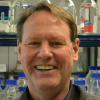 William Martin (DE)
William Martin (DE)Düsseldorf
If nothing in biology makes sense except in the light of evolution, then nothing in modern biology makes sense except in the light of molecular evolution. In this exciting time of omics in biology our session on molecular evolution will take you on a journey from the origin of life and first cells via bacterial biofilm evolution all the way to state of the art molecular phylogenomics and genomic phylostratigraphy, touching ground on the latest ideas on the origin of eukaryotes and cancer in metazoans. There are intriguing times ahead in the world of evolution on molecular level.
RNA Function
04/07/2021
16:00 – 18:00h
 Štepánka Vanácová (CZ)
Štepánka Vanácová (CZ)Brno
 Jernej Ule (UK)
Jernej Ule (UK)London
Many diseases are caused by mutations that disrupt RNA metabolism. To find treatments for these diseases, we need to understand how these mutations affect the functions of RNAs or their bound proteins. Recent years have revealed the importance of many previously unforeseen modifications of RNAs and bound proteins. This session will bring together experts who have contributed to studies of RNA methylation, new ways of polyA tail regulation, and post-translational modifications of the RNA-binding proteins. Thereby, it will highlight some of the hottest new methods and concepts in RNA biology, and demonstrate its broad relevance for development and disease.
Epigenetics
04/07/2021
16:00 – 18:00h
 Oliver Vugrek (HR)
Oliver Vugrek (HR)Zagreb
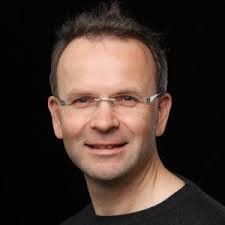 Christof Niehrs (DE)
Christof Niehrs (DE)Mainz
This session will outline the great diversity in the epigenomics field, reflecting both on DNA and on protein modifications, by presenting data from diverse model systems as well as clinical research and new insights in disease epigenomics. The session will move from basic epigenetic mechanisms and chromatin structure, epigenomics and epigenomic technologies to clinical and translational epigenetics.
Protein Turnover – A Limited Lifespan
Autophagy and Protein Recycling
04/07/2021
09:00 – 11:00h
 Patrizia Agostinis (BE)
Patrizia Agostinis (BE)Leuven
 Nektarios Tavernarakis (GR)
Nektarios Tavernarakis (GR)Crete
Autophagy, the major lysosomal pathway for recycling intracellular components including whole organelles, has emerged as a key process modulating proteostasis in physiological and pathological conditions, ranging from metabolic imbalance and aging, to neurodegeneration, infections, immune disorders, tumorigenesis and cancer therapy. The discoveries that autophagy pathways intersect with other key homeostatic processes that are deranged in several human diseases have spurred efforts from many laboratories trying to conceptualize the complex role of autophagy in homeostasis using preclinical models. Over the past decade, major progress has been made to understand the molecular machineries regulating various autophagy pathways and revealed the complexity of the processes controlled by autophagy-related genes and their intersection with endocytic pathways, other trafficking and secretion mechanisms, metabolic pathways and the cell death machinery. This session will cover and discuss fundamental principles of autophagy regulation, the interface between autophagy pathways with other homeostatic and stress-regulated mechanisms, as well as basic and translational aspects harnessing autophagy pathways in human diseases.
Protein Biosynthesis and Expansion of the Genetic Code
04/07/2021
09:00 – 11:00h
 Ita Gruic Sovulj (HR)
Ita Gruic Sovulj (HR)Zagreb
 Nediljko Budisa (CA)
Nediljko Budisa (CA)Winnipeg
Protein synthesis proceeds at a considerable cost and under high demand to produce a functional proteome. Thus, both the accuracy of translation as well as its rate are precisely controlled and have evolved under strong pressure to perform at minimal cost and maximal efficiency. Nonetheless, we can nowadays reengineer the translational machinery to include non-proteinogenic or synthetic amino acids in the protein alphabet. What are the mechanisms that control translational fidelity/efficiency and how we can manipulate them to take a step beyond the natural role of the translational machinery? These questions comprise the focus of this session.
Protein Folding and Misfolding
04/07/2021
09:00 – 11:00h
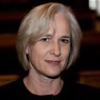 Nataša Poklar Ulrih (SI)
Nataša Poklar Ulrih (SI)Ljubljana
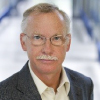 Franz-Ulrich Hartl (DE)
Franz-Ulrich Hartl (DE)Martinsried
Protein folding is required for the realization of genetic information at the level of functional proteins and as such is one of the most fundamental reactions in all of biology. To understand the mechanism of protein folding pathways in the cytosol of prokaryotes and eukaryotes, different approaches from biophysics to cell biology are required. The session aims to provide a broad overview of the current state of protein folding and misfolding understanding and to highlighting recent achievements, with a focus on the role of chaperons and on the consequences of misfolding events leading to diseases.
Proteolytic Processing
04/07/2021
16:00 – 18:00h
 Boris Turk (SI)
Boris Turk (SI)Ljubljana
 Seamus J Martin (IE)
Seamus J Martin (IE)Dublin
Proteolysis plays a key role in numerous vital processes and proteases are now seen as extremely important signaling molecules and not only as protein-degrading machineries. Their ability to hydrolyze their protein and peptide substrates at a single or multiple sites, depending on their specificity, makes them unique among the enzymes. Their activity requires strict regulation and dysregulation can lead to pathologies, such as cardiovascular and inflammatory diseases, cancer, osteoporosis and neurological disorders. Understanding protease specificity is therefore crucial in order to understand their biology as well as to develop tools and drugs. Recent advancements in the field have largely improved our understanding of protease biology through extensive specificity profiling and identification of physiological protease substrates. There are growing efforts to transfer this knowledge into clinical praxis but their success is often limited because of overlapping protease features, protease redundancy and tools lacking specificity. Here we will discuss the current trends and challenges in protease research, and how to exploit the growing information on proteases for understanding their biology, as well as for future development of the field.
Protein Localization and Dynamics
04/07/2021
16:00 – 18:00h
 Maja Herak Bosnar (HR)
Maja Herak Bosnar (HR)Zagreb
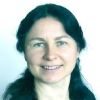 Anna Akhmanova (NL)
Anna Akhmanova (NL)Utrecht
Virtually all important cellular processes such as cell division, cell motility, organelle remodelling and intracellular trafficking depend on the precise localization of proteins and the dynamics of their interactions. This session will cover the topics of protein localization and dynamics including their impact on understanding human diseases.
Signals and Membranes – Talking and Listening
Neurobiochemistry
05/07/2021
09:00 – 11:00h
 Zrinka Kovarik (HR)
Zrinka Kovarik (HR)Zagreb
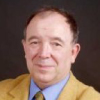 Jean-Pierre Changeux (FR)
Jean-Pierre Changeux (FR)Paris
The symposium will highlight recent advances in neurobiology, especially to capture key players in cholinergic neurotransmission. Acetylcholinesterase, its splicing and post‐translational modifications, the formation of synapses, the interplay between receptors and their antagonists, synaptic plasticity and implications of cholinergic circuitry that are relevant to neurotoxicity are among the topics that will be discussed.
Membranes
05/07/2021
09:00 – 11:00h
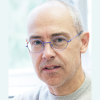 Igor Križaj (SI)
Igor Križaj (SI)Ljubljana
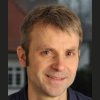 Christian Eggeling (DE)
Christian Eggeling (DE)Jena
Cell membranes protect and organize cells. All cells have an outer plasma membrane that regulates not only what enters the cell, but also how much of any given substance comes in. Unlike prokaryotes, eukaryotic cells also possess internal membranes that encase their organelles and control the exchange of essential cell components. Both types of membranes have a specialized structure that facilitates their gatekeeping function. The structure differences that modify . gatekeeping function will be addressed in this session.
Receptor–Ligand interactions
05/07/2021
09:00 – 11:00h
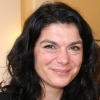 Kristina Sepcic (SI)
Kristina Sepcic (SI)Ljubljana
 David Craik (AU)
David Craik (AU)Brisbane
The binding of a signaling molecule (ligand) to its receiving molecule (receptor) plays a crucial role in most of the biological events occurring in living cells. Receptors and ligands are complementary (macro) molecules that come in closely matched pairs. Their interaction, sometimes in an interesting (positive of negative) allosteric manner, changes the receptor’s conformation or activity, resulting in a propagation of a signal or in a direct change inside the cell. To uncover these interactions is extremely important for the understanding of diverse biological processes, as well as in pharmaceutical industry, biomedicine and bionanotechnology.
Structural Biology and Imaging – Under the Magnifying Glass
New Approaches in Structure Determination
05/07/2021
09:00 – 11:00h
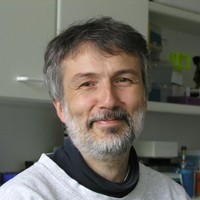 Dusan Turk (SI)
Dusan Turk (SI)Ljubljana
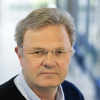 Wolfgang Baumeister (DE)
Wolfgang Baumeister (DE)Martinsried
This session will provide insight into the recently reshaped frontiers of macromolecular structure determination by electron microscopy and diffraction of X-rays provided by powerful sources such as free electron laser.
Imaging for Life: From Molecules to Organisms
05/07/2021
09:00 – 11:00h
 Robert Zorec (SI)
Robert Zorec (SI)Ljubljana
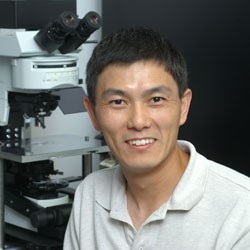 Ling-Gang Wu (US)
Ling-Gang Wu (US)Bethesda
The invention of the optical microscope was instrumental for the development of cell theory in the 19th century. Recent advances in super-resolution fluorescence microscopy (acknowledged by a Nobel prize in 2014) warrants further insights into the understanding of living tissue. Invited speakers in this session will cover use of super-resolution microscopy in the study of whole tissue (Jan Tønnesen, who recently imaged the ’dark matter‘, space between cells in the brain) and in the study of eukaryotic cells, where subcellular structures are below the resolution limit of classical optical microscope (Ling-Gang Wu, who will discuss the nature of merger between the vesicle and the plasma membrane, where the fusion pore, an intermediate of exocytosis and endocytosis, was visualized for the first time). Membrane merger is regulated by second messengers and proteins, including the SNARE complex (Nobel prize in 2013), and Jernej Jorgačevski will discuss single molecule length measurements of a secretory vesicle SNARE molecule and the role of these molecules in regulating the fusion pore.
Structures of Nucleic Acids
05/07/2021
16:00 – 18:00h
 Janez Plavec (SI)
Janez Plavec (SI)Ljubljana
 Harald Schwalbe (DE)
Harald Schwalbe (DE)Frankfurt
Nucleic acids are prone to structural polymorphism: in addition to the well-known double helix, a number of alternative structures such as G-quadruplexes and i-motifs have emerged. Understanding their formation in the human genome, especially in telomeres and oncogene promoters, and their roles involves studies of their structures, rules of recognition and formation as well as application to various pathologies. High-resolution structural methods help to delineate non-covalent interactions stabilizing well-defined nucleic acid assemblies. In recent years the presence of G-quadruplexes in viruses has attracted increasing interest and specific ligands show promising antiviral activity through G-quadruplexes-mediated mechanisms of action both at the genome and at the transcription level.
Molecular Machines
06/07/2021
16:00 – 18:00h
 Brigita Lenarcic (SI)
Brigita Lenarcic (SI)Ljubljana
 Kristina Djinović Carugo (AT)
Kristina Djinović Carugo (AT)Vienna
Many of the fundamental processes within our cells are performed by a coordinated action of multi-protein complexes we call molecular machines. These assemblies are essential components of complex biological functions such as transcription, translation, cytoskeleton organization, signalling cascades and secretion pathways. Understanding molecular machines helps us better understand the underlying mechanisms of how cells function. The aim of this session is to present a summary of the latest discoveries related to selected molecular machines, which were studied by complementary approaches, employing a combination of structural biology, biochemical and biophysical methods and cell biology techniques.
Synthetic Biology and Molecular Biotechnology – The Final Frontiers
Bionanotechnology
05/07/2021
16:00 – 18:00h
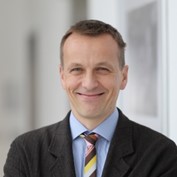 Gregor Anderluh (SI)
Gregor Anderluh (SI)Ljubljana
 Giovanni Maglia (NL)
Giovanni Maglia (NL)Gronningen
Bionanotechnology operates at the intersection of nanotechnology and biology. Important advances in recent years have produced nanodevices for sensing applications and nanoparticles for molecular delivery to cells. Engineered proteins and nucleic acids were used for these achievements. The section will present current advances in nanobiotechnology with an emphasis on the development of nanopores and other nanodevices that work on membranes.
Designed Regulatory Circuits and Genome Editing
05/07/2021
16:00 – 18:00h
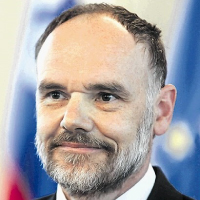 Roman Jerala (SI)
Roman Jerala (SI)Ljubljana
 Martin Fussenegger (CH)
Martin Fussenegger (CH)Basel
Designed regulatory circuits enable us to understand the regulatory mechanisms of natural systems and enable therapeutic, diagnostic as well as biotechnological applications. Recent advances of synthetic biology are based on the expanded toolbox of modular regulators and DNA-binding domains, such as zinc fingers, TALEs and CRISPR, understanding of natural regulatory circuits and design of de novo circuits inspired by nonbiological systems. New DNA-targeting strategies allow targeting of almost any selected nucleotide sequence aimed either to modify the DNA or to recruit different effector domains, enabling multiplexing and precision genome engineering at an unprecedented scale.
Plant Biotechnology
06/07/2021
09:00 – 11:00h
 Maja Ravnikar (SI)
Maja Ravnikar (SI)Ljubljana
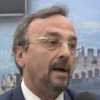 Mario Pezzotti (IT)
Mario Pezzotti (IT)Verona
In recent years novel concepts have been introduced into plant biotechnology. Within this session we will address some at the front edge. Plant biofactories are now reality, as synthetic biology tools enable transfer of whole metabolic pathways into plant cells. In addition, new omics techniques now enable the directed breeding of stress-resilient varieties; an exemplary research will be shown for grapevine. Further new techniques also allow for improved agricultural practices from monitoring of the fields via satellite to using on-site pathogen detection tests.
Metabolic Engineering: Emerging Technologies for Industrial Process Development
07/07/2021
16:30 – 18:30h
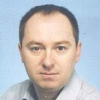 Hrvoje Petkovic (SI)
Hrvoje Petkovic (SI)Ljubljana
 Diethard Mattanovich (AT)
Diethard Mattanovich (AT)Vienna
Microorganisms are used at industrial scale for production of diverse primary and secondary metabolites. This includes biosynthesis of fine chemicals such as amino acids, organic acids, vitamins and many other commercially valuable products, often replacing traditional chemical synthesis approaches. Numerous novel secondary metabolites of medical and agricultural importance are being produced by innovative, greener and more sustainable bioprocesses. This section will focus on concepts and emerging technologies of metabolic engineering combined with advanced approaches in synthetic biology used for engineering of industrial bioprocesses for sustainable production of bulk and high-value chemicals.
From Systems to Precision Medicine – Searching for a Silver Bullet
Stem Cells and Regenerative Medicine
06/07/2021
09:00 – 11:00h
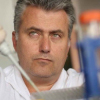 Miomir Kneževic (SI)
Miomir Kneževic (SI)Ljubljana
 Stephen Minger (UK)
Stephen Minger (UK)London
There has been significant interest in the therapeutic and scientific potential of stem cells since reconstitution of the haematopoietic system was first realized by bone marrow transplantation in the 1960s. The isolation of tissue-specific, multipotent stem cells from adult organs and the derivation of pluripotent human embryonic stem cells and more recently induced pluripotent stem cells offer the potential for regeneration of a number of different tissues and organs susceptible to age-related degenerative conditions and traumatic injury. In the not-too-distant future, it will be possible to repair heart tissue damaged by myocardial infarction, to replace neuronal cells lost in Parkinson’s disease and traumatic brain injuries, to transplant new insulin-producing cells for diabetics and myelinating cells for individuals afflicted with multiple sclerosis, and to replace bone and cartilage lost through aging and inflammatory disease. In addition, the generation of specific populations of defined subtypes of human cells has tremendous potential to revolutionize the fields of drug discovery and investigation into the cellular bases of human disease. The newly emerging field of Regenerative Medicine will fundamentally alter clinical medicine and significantly influence our perceptions of aging, health and disease, with a myriad of consequences for society at large.
Immunotherapy
06/07/2021
09:00 – 11:00h
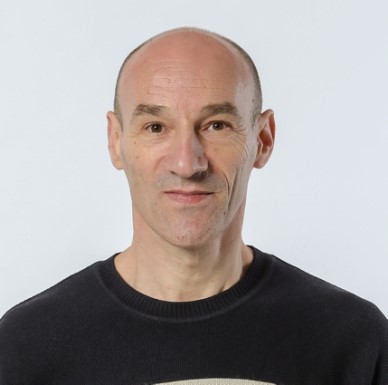 Janoš Terzic (HR)
Janoš Terzic (HR)Split
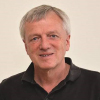 Stefan Rose-John (DE)
Stefan Rose-John (DE)Kiel
It has been known for a long time that the immune reaction to malignant tumors has two faces: one that is used to fight against cancer and an opposite one that facilitates and supports malignant growth. In the past few decades, molecular elements of both arms of the immunity–cancer relationship have been studied and mechanisms underlying this complex interplay are now emerging. Benefits of basic research in this area are yielding new forms of immunotherapy for clinical practice, which was recognized by a Nobel Prize in 2018 awarded for the discovery of the scientific foundation of checkpoint-inhibition therapy. However, more aspects of the intricate relationships between inflammation and different cancer types remain elusive and deserve additional research efforts.
Pharmacogenomics and Biomarkers
06/07/2021
09:00 – 11:00h
 Jerka Dumic (HR)
Jerka Dumic (HR)Zagreb
 Magnus Ingelman-Sundberg (SE)
Magnus Ingelman-Sundberg (SE)Stockholm
Personalised medicine is the Human Genome Project “dividend”. Knowledge in genetics enabled development of pharmacogenomics, which uses an individual’s genome for prescribing the safest and most effective drugs, whereas development of different -omics and imaging techniques provided a platform for identifying a tremendous number of new biomarkers for precise and reliable diagnoses and prognoses. These advances, together with the growing availability of health data, offer an opportunity to implement precise personalized patient care in clinical practice. This session will present recent achievements in biomarkers development and pharmacogenomics related to complex genetic diseases.
New Frontiers in Medicinal Chemistry
06/07/2021
16:00 – 18:00h
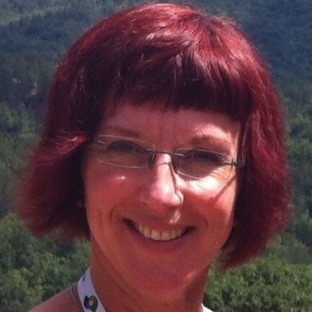 Marijeta Kralj (HR)
Marijeta Kralj (HR)Zagreb
 Stanislav Gobec (SI)
Stanislav Gobec (SI)Ljubljana
Medicinal chemistry is a highly multidisciplinary and rapidly developing area that deals with the invention, design and preparation of biologically active compounds, followed by studies investigating their interactions with biological targets to understand their mode of action at the molecular level. This session will provide insights into recent advances on different techniques for design and preparation of new drug leads in antiviral, antimicrobial and anticancer chemotherapy, as well as new drug candidates for neurodegenerative and inflammatory disease. Emphasis will be put on identification of multitarget-directed small molecules as innovative therapeutic tools. Mechanism of action and structure–activity relationship studies, including elucidation of target enzyme/protein-drug interaction and metabolic pathways will be discussed.
Bioinformatics and Computational Biology
06/07/2021
16:00 – 18:00h
 Kristian Vlahovicek (HR)
Kristian Vlahovicek (HR)Zagreb
 Petr Svoboda (CZ)
Petr Svoboda (CZ)Prague
With biology entering the digital era, we are immersed in a wealth of information originating in high-throughput experiments. These data enable us for the first time to study life at the level unimaginable before: entire systems – molecular, cellular or even up to entire organisms and ecosystems. Computational methods, combined with experimental approaches, give us the possibility to build accurate models on how life works and help us move a step closer to unravelling open questions in reproduction, development and growth. Answering these open questions will in turn enable us to understand and control processes crucial to prevent and successfully combat the ultimate medical problems – aging and cancer.
Organisms – Molecules – Interactions – Seeing the Forest
Biochemistry of Toxins
06/07/2021
09:00 – 11:00h
 Maja Šegvic Klaric (HR)
Maja Šegvic Klaric (HR)Zagreb
 Isabelle Oswald (FR)
Isabelle Oswald (FR)Toulouse
Toxin-poison, whether chemically synthesized or produced by living organisms, such as bacterial toxins, mycotoxins, phycotoxins or zootoxins, may trigger a number of responses within the biochemical machinery of the organism. The session will cover several examples of toxins, their target biomolecules, cell responses and biomarkers, as well as development of new methods for toxin exposure detection.
Mechanisms of Microbiome–Host Interactions
06/07/2021
16:00 – 18:00h
 Maja Rupnik (SI)
Maja Rupnik (SI)Maribor
 David Berry, Austria (AT)
David Berry, Austria (AT)Vienna
The complex microbial populations that inhabit the surfaces of our bodies are increasingly recognized to have a pivotal role in development and health through a variety of different mechanisms. In contrary is the dysbalanced microbiota associated with various diseases such as obesity, metabolic disorders, autoimmune diseases, mental disorders, cancer or chronic inflammatory diseases. Therefore microbiota modulation emerges as a potential therapeutic target. The session will focus on methods for microbiota studies that are developing from simple community description to the functional level and on metabolism related mechanisms of microbiome-host interactions.
Cellular Organization
07/07/2021
09:00 – 11:00h
 Iva Tolic (HR)
Iva Tolic (HR)Zagreb
 Devrim Gozuacik (TR)
Devrim Gozuacik (TR)Istanbul
Proper functioning of cells requires robust control mechanisms. For example, cell division should be achieved through balanced segregation of chromosomes, intracellular levels of building blocks (e.g. amino acids) should be monitored and cellular organelles such as mitochondria should be kept under strict surveillance in order to avoid energy crisis, oxidative damage and stress. Continuous monitoring of cellular events by specialized components (e.g. motor proteins and microtubule components), by pathways responding to organellar stress (e.g. autophagy) and by a number of signalling molecules (e.g. nitrous oxide and calcium), ensure preservation of homeostasis and avoid abnormalities in cellular functions. During this session, new findings in above-mentioned control mechanisms and systems will be presented.
Molecular Interactions of Plants with the Environment
07/07/2021
09:00 – 11:00h
 Kristina Gruden (SI)
Kristina Gruden (SI)Ljubljana
 Wolfram Weckwerth (AT)
Wolfram Weckwerth (AT)Vienna
Interaction of plants with the environment is complex due to individual interaction of each of the different environmental factors plants are facing in the field. Understanding the specificity of responses and optimal balance between growth and defence is critical in agriculture as it is estimated that 70% of crop yield is on average lost due to stresses. Within this session, we will get acquainted with different methodological approaches to study this interaction, from monitoring molecular levels to spatiotemporal resolution of responses and mathematical modelling.
Life on the Edge – Extremophilic/ Extremotolerant organisms
07/07/2021
09:00 – 11:00h
 Ana Plemenitaš (SI)
Ana Plemenitaš (SI)Ljubljana
 Elizaveta Bonch-Osmolovskaya (RU)
Elizaveta Bonch-Osmolovskaya (RU)Moscow
Environments with extremes in temperature, salt concentration, pH and pressure are populated with specially adapted organisms from Archaea, Bacteria, Eukarya and viruses. Microbial life from such environments has fascinated many biochemists and their studies have revealed many unique molecular mechanisms that enable thriving in such harsh conditionsThis session aims to bring together scientists working on extremophilic/extremotolerant organisms and will focus on biochemistry and molecular biology of selected examples isolated from extreme environments.
Molecular Medicine – Understanding the Other Me
Cancer Immunology and Immunotherapy
07/07/2021
09:00 – 11:00h
 Janko Kos (SI)
Janko Kos (SI)Ljubljana
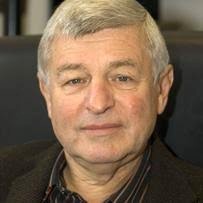 Wolf Herve Fridman (FR)
Wolf Herve Fridman (FR)Paris
The accumulated knowledge in cancer immunology and encouraging results from clinical trials focused on activation of an antitumor immune response indicate that the immune system plays an essential role in host defence against cancer and can be exploited for effective cancer therapy. A key question is how tumor cells escape immune surveillance and trigger suppressive mechanisms inactivating the immune response. From a better understanding of suppressive molecular mechanimsms and biochemical processes we can propose new therapuetic strategies to improve treatment of cancer patients. The session will highlight some of the most advanced concepts in cancer immunotherapy and demonstrate their relevance in clinical practice.
Immune and Inflammatory Disorders
07/07/2021
09:00 – 11:00h
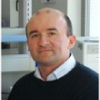 Bojan Polic (HR)
Bojan Polic (HR)Zagreb
 Burkhard Becher (CH)
Burkhard Becher (CH)Zurich
Aim of this session is to cover new development on identification of molecular mechanisms driving immune and inflammatory disorders. The main emphasis of the session will be on discovering the immune mechanisms associating diabetes mellitus type 2 and obesity, neuroinflammation and multiple sclerosis, and inflammation and cancer development.
Cancer Initiation and Progression
07/07/2021
16:30 – 18:30h
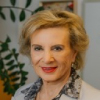 Tamara Lah Turnšek (SI)
Tamara Lah Turnšek (SI)Ljubljana
 Geoffrey Pilkington (UK)
Geoffrey Pilkington (UK)Cancer initiation involves progressive genetic alterations, caused by carcinogens such as viruses. The scientifiic and clinical relevance of cancer stem cells will be presented in breast and brain cancer by Maria Grazia Daidone and Geoffey Pilkingtnon, respectively. By regulating the balances between cell renewal and high resistance to therpy via numerous signalling pathways, the cancer stem cells become masters of their own destinies, as will be discussed by Richard Pestell.
Aging Stress and Neurodegeneration
07/07/2021
16:30 – 18:30h
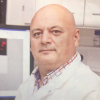 Boris Rogelj (SI)
Boris Rogelj (SI)Ljubljana
 Tihomir Balog (HR)
Tihomir Balog (HR)Zagreb
Molecular and physiological changes associated with neurodegenerative diseases are inexorably linked with aging. Age-related gradual decline of organismal homeostasis, which includes changes in ER and oxidative stress, mitochondrial dysfunction, DNA damage, intracellular transport, protein synthesis and turnover, etc., have all been linked with formation of pathognomonic protein aggregates. Thus, advances in our understanding of the molecular basis of neurodegeneration and healthy aging present an imperative and exciting opportunity to identify novel druggable targets and develop more effective interventions.
Redox Biology – Oxidative Stress Signalling
07/07/2021
16:30 – 18:30h
 László Virág (HU)
László Virág (HU)Debrecen
 Ana Casas Guijarro (NL)
Ana Casas Guijarro (NL)Maastricht
The concept of oxidative stress embraces chemistry, biochemistry, cell biology, (patho) physiology and medicine. The last decade witnessed a marked shift in the focus of the field from oxidant-induced cell and tissue damage and its prevention by antioxidants to redox signalling. The discovery of master switch systems (OxyR and Nrf2/Keap1) opened ways for more comprehensive systems biology approaches for oxidative stress research. The proposed session aims to provide the broadest possible overview of the current state of redox biology, attempting to highlight the most recent systems biology approaches and focusing on redox signalling events under healthy and disease conditions.
The Circadian Clock and Disease
08/07/2021
09:00 – 11:00h
 Damjana Rozman (SI)
Damjana Rozman (SI)Ljubljana
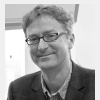 Achim Kramer (DE)
Achim Kramer (DE)Berlin
In 2017, the Nobel Prize in Physiology or Medicine was awarded for discoveries of mechanisms that drive the inner (circadian) clock of the body. The concept of the circadian clock links biochemistry, neurology and endocrinology through physiology and pathophysiology to medicine. The circadian clock is a self-sustaining oscillator located in the suprachiasmatic nucleus of the brain. It is driven by transcriptional and translational feedback loops between the core clock transcriptional activators (CLOCK, BMAL1) and repressors (PER, CRY). The peripheral clocks in other organs of the body apply identical biochemical mechanisms to drive the clock of every cell. The central clock is daily entrained by the light. Hormones and brain–periphery nerve connections coordinate the entrainment of other organs. Other signals, such as availability of nutrients, are crucial for entrainment of the gastrointestinal tract and the liver. Altogether, this keeps the body in balance with environmental cues. Long-term shift work and continuous social jet-lag disrupt the balance, which can lead to hormonal and metabolic diseases, such as hormone-based cancers and metabolic syndrome. This session will present the current state of the art in linking the biochemical mechanisms of the clock to human physiology and disease.
Glycans and Lipids – The Strangers We Know from Before
Structural and Functional Glycobiology
08/07/2021
09:00 – 11:00h
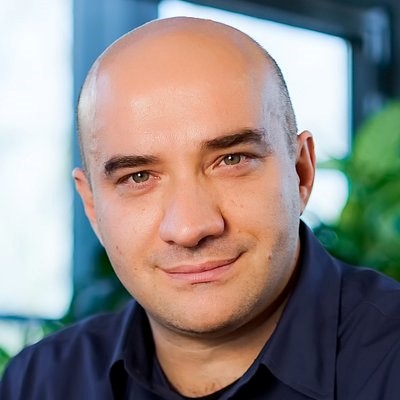 Gordan Lauc (HR)
Gordan Lauc (HR)Zagreb
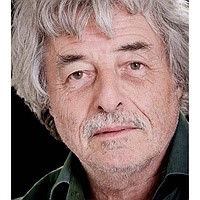 Serge Perez (FR)
Serge Perez (FR)Grenoble
Glycobiology is one of the last large frontiers in science and is attracting more and more attention in recent years. Today we know that glycans are important in virtually all physiological processes that occur on the membrane or outside of the cell, and that they take part in pathophysiology of all major diseases. Furthermore, eight out of ten best-selling drugs in Europe are glycoproteins. However, our understanding of structural/functional details or complex regulatory networks that govern glycan biosynthesis is still limited. Through invited lectures and selected short talks, this session will present recent advances in this dynamic field.
Biomembranes and Lipid Mediators
08/07/2021
09:00 – 11:00h
 Marija Heffer (HR)
Marija Heffer (HR)Osijek
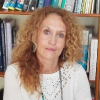 Raquel Marin (ES)
Raquel Marin (ES)La Laguna
Similarly to glycans, cellular lipids, including the constituents of membranes, are not determined by genes, but rather by a pattern of instantaneous enzyme activity. In the face of unpredictable environmental changes, it is a feature providing flexibility and robustness to a variety of physiological processes – including cell signalling. For a long time we have been aware that a membrane is not a uniform structure but a rather complex interaction place where signalling is compartmentalized. It makes all the difference – lipid variability covers a span from development to aging, from sensitivity to resistance, from resilience to collapse.
Lipidomics
08/07/2021
09:00 – 11:00h
 László Vígh (HU)
László Vígh (HU)Szeged
 Kim Ekroos (FI)
Kim Ekroos (FI)Helsinki
Lipids represent a very diverse set of biomolecules. The high diversity is coupled to many functions – lipids are central to the regulation and control of cellular processes. Indeed, it is known that alterations of lipid homeostasis are linked to various diseases. In recent years, lipidomics has made great advances due to the rapid development in novel analysis strategies and approaches, and new instruments with special emphasis on mass spectrometry-based (MS) techniques. The proposed session provides a general overview of MS-based lipidomics strategies, presents some fine examples of applications, and demonstrates the usefulness of lipidomics in both basic and clinical research.
Biochemistry: A Success Story
Biochemistry: A Success Story
08/07/2021
10:00 – 11:00h
 Israel Pecht (IL)
Israel Pecht (IL)Rehovot
 Vito Turk (SI)
Vito Turk (SI)Ljubljana



